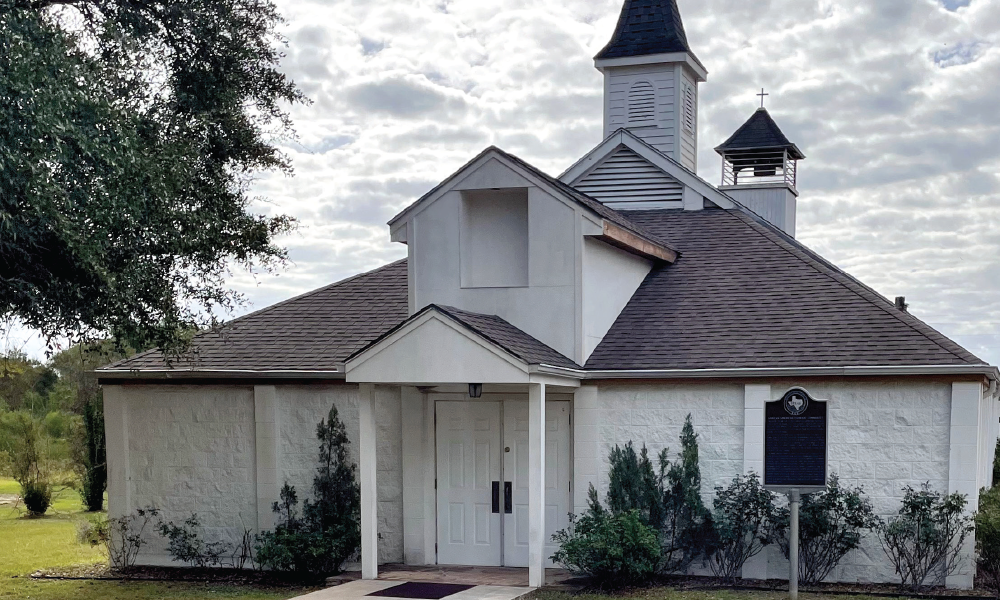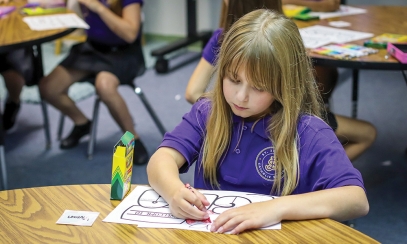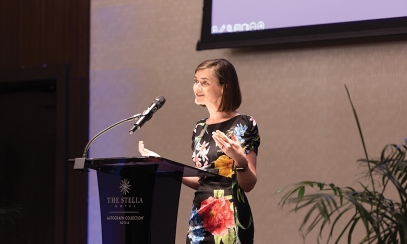
Resilient Mission Community Remains an Example of Faith
As the Diocese of Austin celebrates its 75th anniversary, one of its mission churches — Blessed Virgin Mary in Washington County — observes 175 years as a faithful Catholic community. Besides being the oldest Catholic community in the Diocese of Austin, it is the oldest Black Catholic congregation in Texas. In 1847, the Spann family built a log cabin church near the Brazos River and named it Holy Rosary.
As the Diocese of Austin celebrates its 75th anniversary, one of its mission churches — Blessed Virgin Mary in Washington County — observes 175 years as a faithful Catholic community. Besides being the oldest Catholic community in the Diocese of Austin, it is the oldest Black Catholic congregation in Texas. In 1847, the Spann family built a log cabin church near the Brazos River and named it Holy Rosary.
The Spanns, slave-owning Catholics, catechized the people they enslaved in the faith. They also had a cemetery next to Holy Rosary, where enslaved people and the Spann family lay side by side. Today the cemetery is in immaculate condition as Deacon Limus Sweed Sr. and parish volunteers restored the burial site in the 1990s.
In 1848, a priest from Houston regularly visited Holy Rosary, and in 1854 Holy Rosary reached a milestone when Bishop John Odin named Father John Gonnard as pastor. It was the 15th church in Texas to have a priest in residence.
In 1867, Father Jean Louis Bussant was named pastor, but the bishop moved him two years later, making him the last resident priest assigned to the community. In 1870, the U.S. Census counted African Americans by name rather than by age and owner. Eight African Americans were named Spann, significantly fewer than those enslaved 10 years earlier. By then, the Spanns had incurred a financial downfall.
Without the Spanns providing a source of employment, the freedmen either moved elsewhere to find work or assumed new surnames to express their freedom. Perhaps that is why 10 African Americans named Sweed emerged in the census, while no slave owners named Sweed appeared in the 1860 census for Washington County.
Among them were Abraham and Elicy Sweed, the forebears of the current Sweed family, which still plays a prominent role in the church. By 1900 no Black Spanns lived in Washington County, while the Sweed clan had grown to 23.
After the last resident priest left the parish, the Diocese of Galveston sporadically sent visiting priests to Holy Rosary. The Sweed family was instrumental in gathering the formerly enslaved people in their homes to teach catechism and to pray the rosary.
In December 1888, Father Martin Francis Huhn celebrated Mass for a while; a few families traveled in wagons to Independence for Mass. Others lost interest in the Catholic faith and turned to other denominations.
Father Huhn passed away in 1915, the same year Holy Rosary burned. Regrettably, Mass returned to being celebrated once a year. It again fell on the Sweed matron Elicy Sweed to hold the community of faith together by regularly hosting a rosary at her home.
Father George Elmendorf assumed responsibility of the congregation on June 17, 1935. With parishioners providing labor, a new church went up on Highway 105. The diocese christened it Sacred Heart, which Bishop Christopher E. Byrne dedicated on May 3, 1936.
A series of priests served through 1964. While they did not stay long, they provided Sacred Heart with more regular catechesis. In 1964 Father Robert Mahoney, resident pastor of St. Ann Parish in Somerville, took responsibility over Sacred Heart. In 1882, M. C. Spann Sr. deeded Abraham Sweed 100 acres. Nearly 90 years later, in 1969, descendants of the original Sweed family donated some of this land to the diocese to construct a new church. The parish built a metallic structure about two miles off the highway on Sweed Road. The new building served as a chapel and parish hall.
Parishioners chose the name Blessed Virgin Mary for their third church. According to Deacon Sweed, the name came from longtime parishioner Martha Sweed Walker who “saw an image of the Blessed Virgin Mary in a cloud.”
Next, Father Patrick Dougherty, the pastor at St. Patrick Parish in Navasota, took charge of Blessed Virgin Mary and directed Deacon Bill Merdian to serve there. Though Navasota was in the Galveston Diocese, Austin Bishop Vincent Harris accepted the help.
Later, in 1987, Bishop John McCarthy, third bishop of the Austin Diocese, adopted a plan that required several priests to rotate in celebrating Mass at Blessed Virgin Mary. Fathers Ralph Brennan, Patrick Zurek, Patrick Dougherty, Gregory Patejki and Eugene Shepherd began celebrating Sunday Mass at Blessed Virgin Mary. Father Brennan had pastoral responsibility for the mission.
In 1988 Bishop McCarthy helped the community build a new church at the site of the existing building. Deacon Sweed is a daily presence in the mission, and Father Thaddeus Tabak celebrates Mass twice a week. The Blessed Virgin Mary community may be small in number, but the faith of the oldest African American parish in Texas remains steadfast.
Alfredo E. Cárdenas began as a freelance writer for the Catholic Spirit in 2000, writing histories of parishes. In 2010, Bishop Michael Mulvey of the Diocese of Corpus Christi named him editor of the South Texas Catholic, a publication of the Corpus Christi Diocese. Upon his retirement in 2017, he returned to Austin, where he resumed writing for the Catholic Spirit.



